Who are the Kurds?
- 14 March 2016
- Middle East
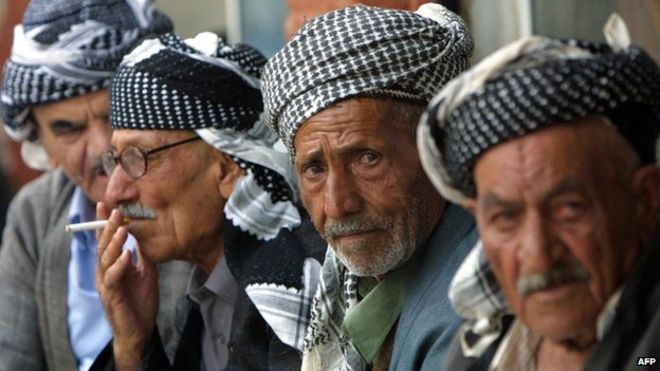 AFP
AFP
Between 25 and 35 million Kurds inhabit a mountainous region straddling the borders of Turkey, Iraq, Syria, Iran and Armenia. They make up the fourth-largest ethnic group in the Middle East, but they have never obtained a permanent nation state.
In recent decades, Kurds have increasingly influenced regional developments, fighting for autonomy in Turkey and playing prominent roles in the conflicts in Iraq and Syria, where they have resisted the advance of the so-called Islamic State (IS) jihadist group.
Where do they come from?
The Kurds are one of the indigenous people of the Mesopotamian plains and the highlands in what are now south-eastern Turkey, north-eastern Syria, northern Iraq, north-western Iran and south-western Armenia.
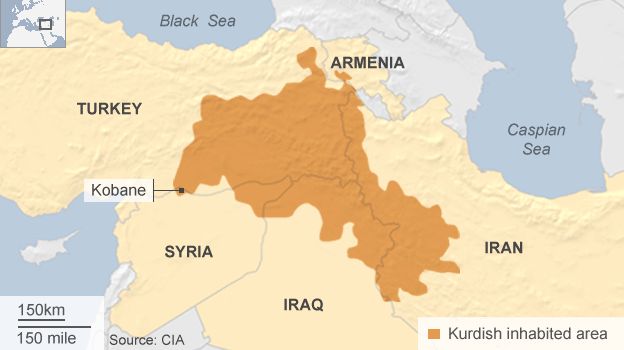
Today, they form a distinctive community, united through race, culture and language, even though they have no standard dialect. They also adhere to a number of different religions and creeds, although the majority are Sunni Muslims.
Why don't they have a state?
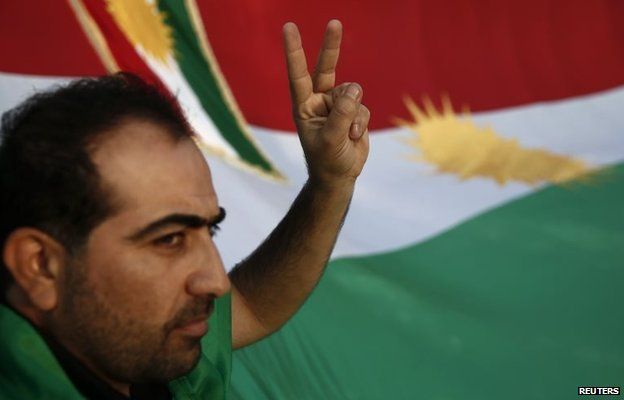 Reuters
Reuters
In the early 20th Century, many Kurds began to consider the creation of a homeland - generally referred to as "Kurdistan". After World War One and the defeat of the Ottoman Empire, the victorious Western allies made provision for a Kurdish state in the 1920 Treaty of Sevres.
Such hopes were dashed three years later, however, when the Treaty of Lausanne, which set the boundaries of modern Turkey, made no provision for a Kurdish state and left Kurds with minority status in their respective countries. Over the next 80 years, any move by Kurds to set up an independent state was brutally quashed.
Why are Kurds at the forefront of the fight against IS?
 AFP
AFP
In mid-2013, IS turned its sights on three Kurdish enclaves that bordered its territory in northern Syria. It launched repeated attacks that until mid-2014 were repelled by the Popular Protection Units (YPG) - the armed wing of the Syrian Kurdish Democratic Unity Party (PYD). The turning point was an offensive in Iraq in June 2014 that saw IS overrun the northern city of Mosul, routing Iraqi army divisions and seizing weaponry later moved to Syria.
The jihadists' advance in Iraq also drew that country's Kurds into the conflict. The government of Iraq's semi-autonomous Kurdistan Region sent its Peshmerga forces to areas abandoned by the army.
For a time there were only minor clashes between IS and the Peshmerga, but in August 2014 the jihadists launched a shock offensive. The Peshmerga withdrew in disarray, allowing several towns inhabited by religious minorities to fall, notably Sinjar, where IS militants killed or captured thousands of Yazidis.
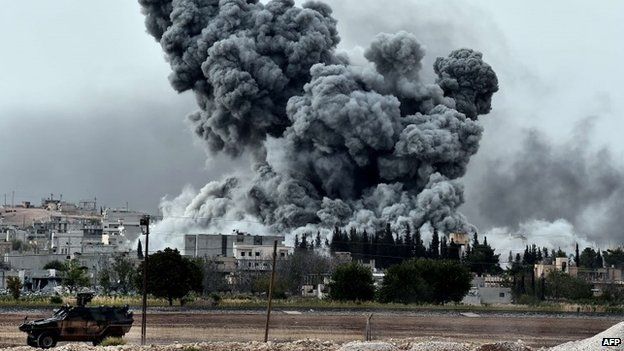 AFP
AFP
Alarmed by the IS advance and the threat of genocide against the Yazidis fleeing Sinjar, a US-led multinational coalition launched air strikes in northern Iraq and sent military advisers to help the Peshmerga. The YPG and the Kurdistan Workers' Party (PKK), previously active in Turkey, also came to their aid.
Although the IS advance on Kurdish territory in Iraq was eventually halted by the Peshmerga and their allies, it did not stop trying to capture the Kurdish enclaves in Syria. In mid-September 2014, IS launched an assault on the enclave around the northern town of Kobane, forcing tens of thousands of people to flee across the nearby Turkish border.
Despite the proximity of the fighting and the threat posed by IS, Turkey refused to attack the jihadist group's positions near the border or allow Turkish Kurds to cross to defend it, triggering Kurdish protests. In October, Ankara partially relented and agreed to allow Peshmerga fighters to join the battle for Kobane, after US-led air strikes helped halt the IS advance.
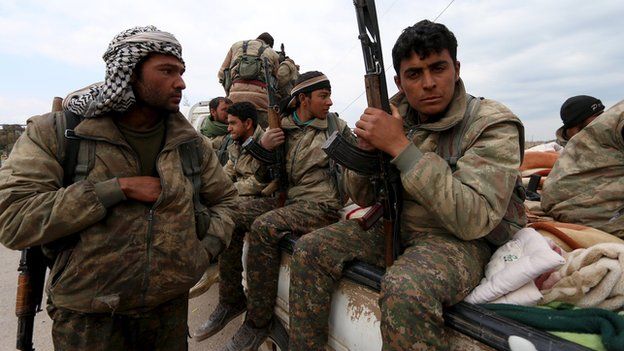 Reuters
Reuters
In January 2015, after a battle that left at least 1,600 people dead and more than 3,200 buildings destroyed or damaged, Kurdish forces regained control of Kobane.
Since then, the Kurds have inflicted a series of defeats on IS in northern Syria with the help of US-led coalition airpower. They have established control over a 400km (250-mile) stretch of contiguous territory along the Turkish border and advanced to within 50km (30 miles) of the IS stronghold of Raqqa.
Fighting under the banner of the Syrian Democratic Forces (SDF), the YPG has emerged as a key ally of the US-led coalition, which considers it one of the few effective partners on the ground in Syria.
Why is Turkey reluctant to help the Kurds battle IS?
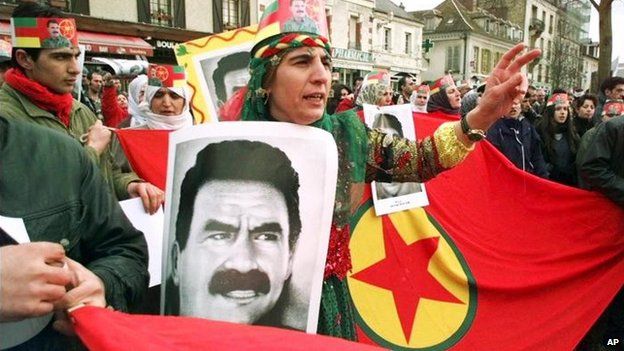 AP
AP
There is deep-seated hostility between the Turkish state and the country's Kurds, who constitute 15% to 20% of the population.
Kurds received harsh treatment at the hands of the Turkish authorities for generations. In response to uprisings in the 1920s and 1930s, many Kurds were resettled, Kurdish names and costumes were banned, the use of the Kurdish language was restricted and even the existence of a Kurdish ethnic identity was denied, with people designated "Mountain Turks".
In 1978, Abdullah Ocalan established the PKK, which called for an independent state within Turkey. Six years later, the group began an armed struggle. Since then, more than 40,000 people have been killed and hundreds of thousands displaced.
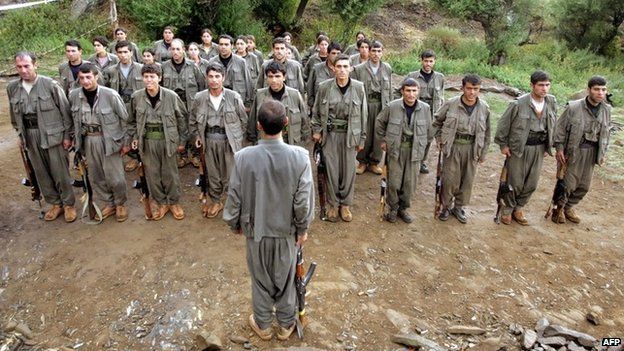 AFP
AFP
In the 1990s the PKK rolled back on its demand for independence, calling instead for greater cultural and political autonomy, but continued to fight. In 2012, the government and PKK began peace talks and the following year a ceasefire was agreed, although clashes continued.
The ceasefire collapsed in July 2015, days after a suicide bombing blamed on IS killed 33 young activists in the mainly Kurdish town of Suruc, near the Syrian border. The PKK responded by attacking Turkish soldiers and police, and the Turkish government launched what it called a "synchronised war on terror" against the PKK and IS. Since then, hundreds of people have been killed in clashes in south-eastern Turkey and in air strikes on PKK camps in northern Iraq.
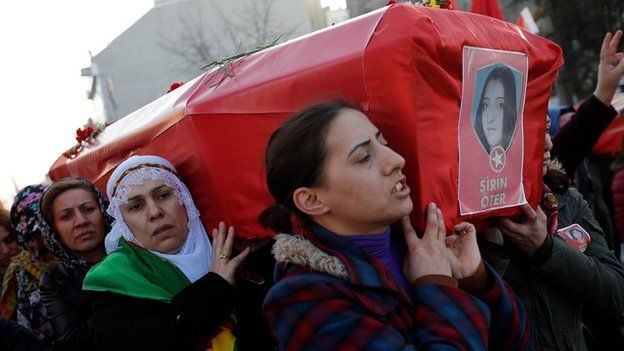 AP
AP
The Turkish authorities also blamed the YPG for a suicide bomb attack in Ankara in February 2016 that left dozens of people dead and Turkish troops shelled YPG positions in north-western Syria to prevent it capturing the rebel-held town of Azaz.
Turkey's government says the YPG and the PYD are affiliates of the PKK, share its goal of secession through armed struggle, and are all terrorist organisations.
What do Syria's Kurds want?
 AFP
AFP
Kurds make up between 7% and 10% of Syria's population. Before the uprising against President Bashar al-Assad began in 2011 most lived in the cities of Damascus and Aleppo, and in three, non-contiguous areas around Kobane, the north-western town of Afrin, and the north-eastern city of Qamishli.
Syria's Kurds have long been suppressed and denied basic rights. Some 300,000 have been denied citizenship since the 1960s, and Kurdish land has been confiscated and redistributed to Arabs in an attempt to "Arabize" Kurdish regions. The state has also sought to limit Kurdish demands for greater autonomy by cracking down on protests and arresting political leaders.
The Kurdish enclaves were relatively unscathed by the first two years of the Syrian conflict. The main Kurdish parties publicly avoided taking sides. In mid-2012, government forces withdrew to concentrate on fighting the rebels elsewhere, after which Kurdish groups took control.
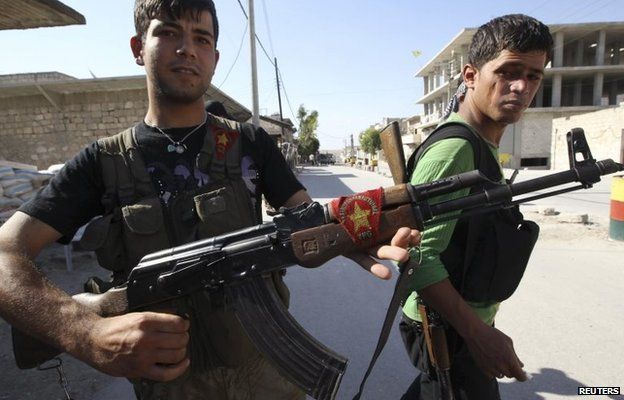 Reuters
Reuters
The Democratic Unity Party (PYD) quickly established itself as the dominant force, straining relations with smaller parties who formed the Kurdistan National Council (KNC). In January 2014, they united to declare the creation of a democratic autonomous government, with branches based in the three Kurdish enclaves. The parties stressed that they were not seeking independence from Syria but "local democratic administration" within a federal framework.
PYD leader Salih Muslim has insisted that any political settlement to end the conflict in Syria will have to include legal guarantees for Kurdish rights and recognition of Kurdish autonomy. Mr Muslim has also denied that his party is allied to the Syrian government, even though the YPG has fought against some rebel groups and avoided conflict with the army, stressing that President Assad cannot remain in power after any transitional period.
Will Iraq's Kurds gain independence?
 Hulton Archive
Hulton Archive
Kurds make up an estimated 15% to 20% of Iraq's population. They have historically enjoyed more national rights than Kurds living in neighbouring states, but also faced brutal repression.
Kurds in the north of Iraq revolted against British rule during the mandate era, but were crushed. In 1946, Mustafa Barzani formed the Kurdistan Democratic Party (KDP) to fight for autonomy in Iraq. After the 1958 revolution, a new constitution recognised Kurdish nationality. But Barzani's plan for self-rule was rejected by the Arab-led central government and the KDP launched an armed struggle in 1961.
In 1970, the government offered a deal to end the fighting that gave the Kurds a de facto autonomous region. But it ultimately collapsed and fighting resumed in 1974. A year later, divisions within the KDP saw Jalal Talabani leave and form the Patriotic Union of Kurdistan (PUK).
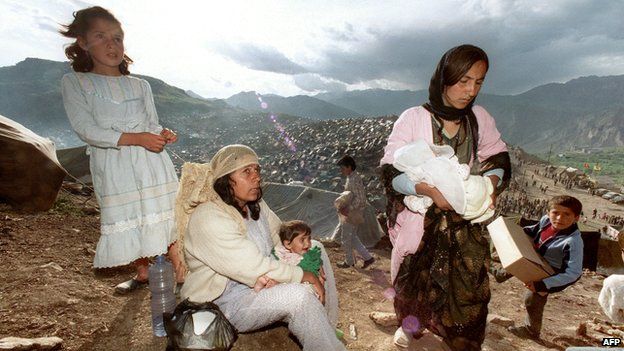 AFP
AFP
In the late 1970s, the government began settling Arabs in areas with Kurdish majorities, particularly around the oil-rich city of Kirkuk, and forcibly relocating Kurds. The policy was accelerated in the 1980s during the Iran-Iraq War, in which the Kurds backed the Islamic republic. In 1988, Saddam Hussein unleashed a campaign of vengeance on the Kurds that included the poison-gas attack on Halabja.
When Iraq was defeated in the 1991 Gulf War Barzani's son, Massoud, led a Kurdish rebellion. Its violent suppression prompted the US and its allies to impose a no-fly zone in the north that allowed Kurds to enjoy self-rule. The KDP and PUK agreed to share power, but tensions rose and a four-year internal conflict erupted in 1994.
The two parties co-operated with the US-led invasion of Iraq in 2003 that toppled Saddam Hussein and have participated in all national governments formed since then. They have also governed in coalition in the Kurdistan Regional Government (KRG), created in 2005 to administer the three provinces of Dohuk, Irbil and Sulaimaniya, and sought to maximise Kurdish autonomy by building a pipeline to Turkey and exporting oil independently.
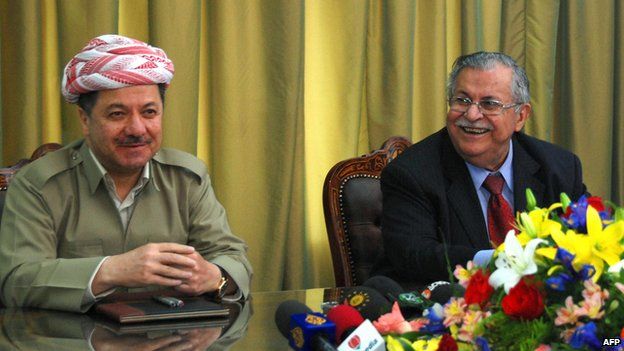 AFP
AFP
After IS captured large parts of northern Iraq in 2014, the KRG sent the Peshmerga into disputed areas claimed by the Kurds and the central government, and then asked the Kurdish parliament to plan a referendum on independence.
In February 2016, Massoud Barzani - who became president of Kurdistan in 2005 - reiterated the call for a referendum. However, he stressed that it would be non-binding and would simply allow Kurdish leaders to "execute the will of the people at the appropriate time and conditions".
No comments:
Post a Comment